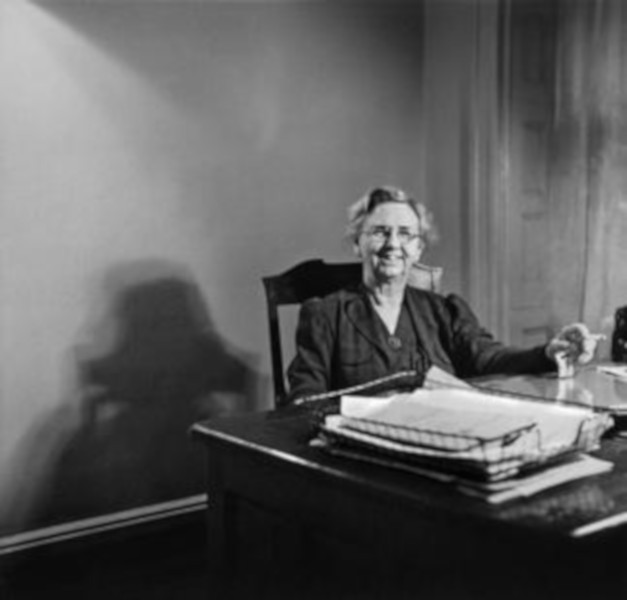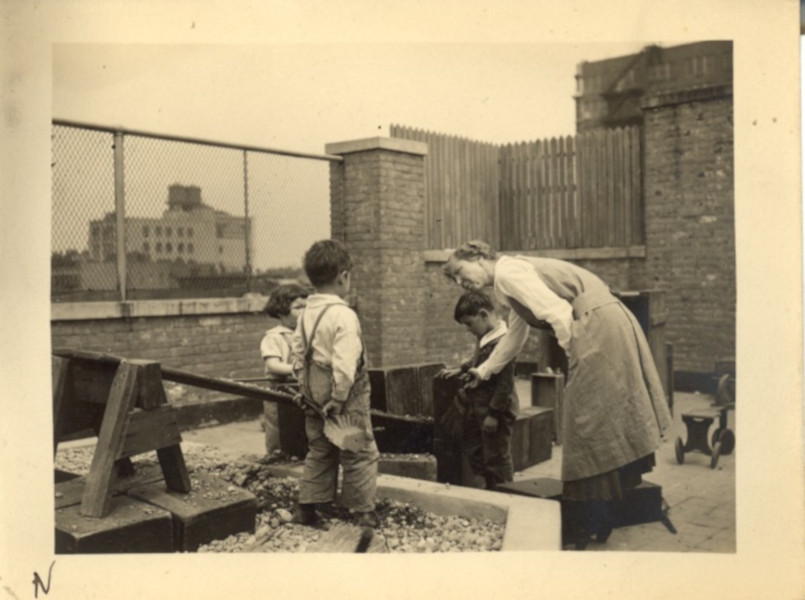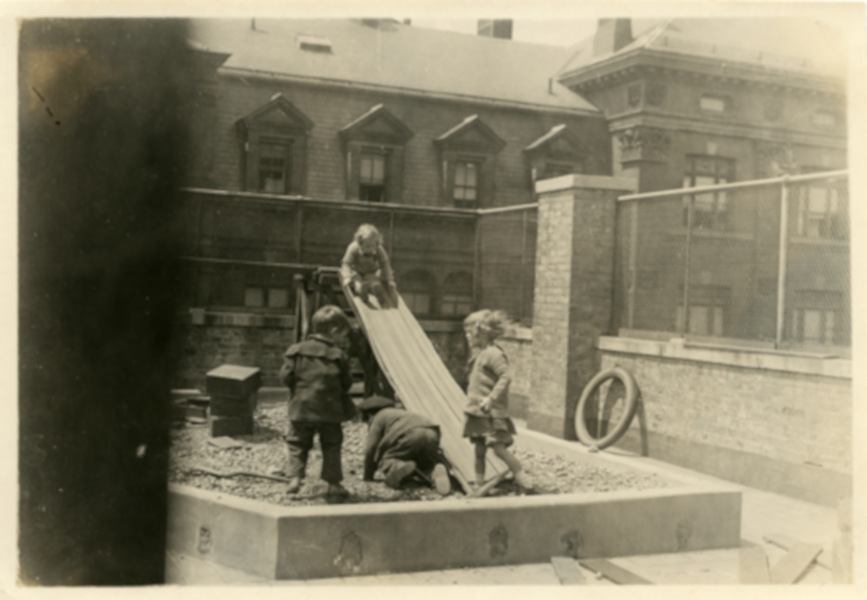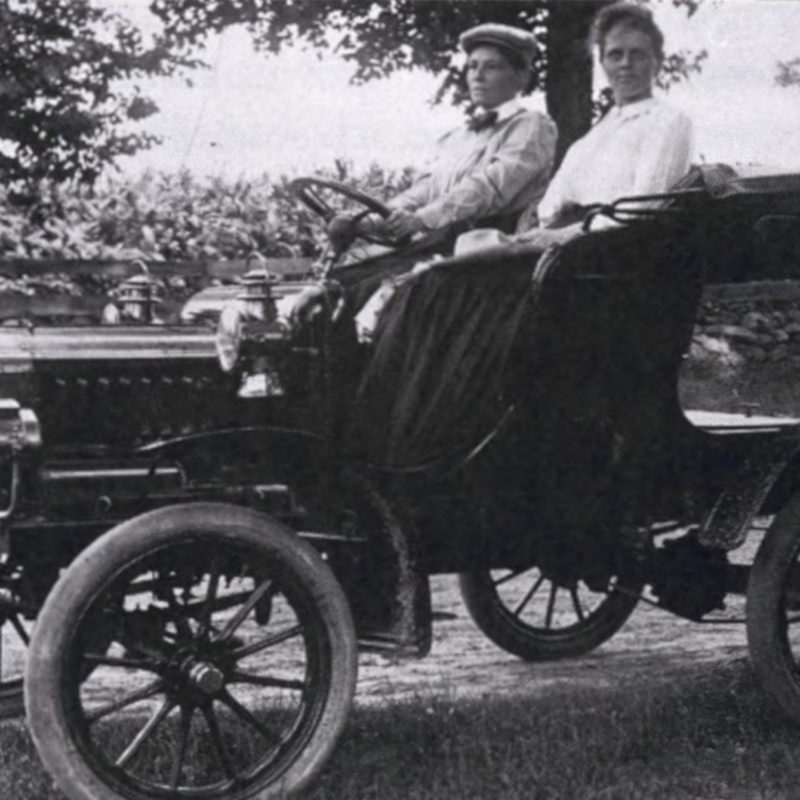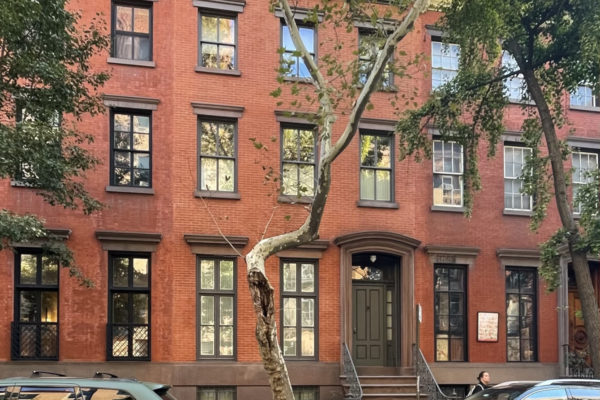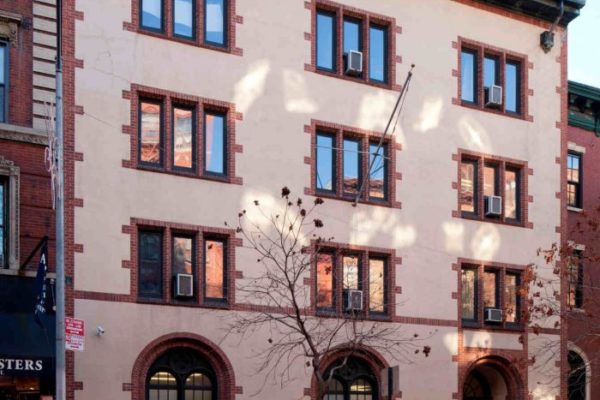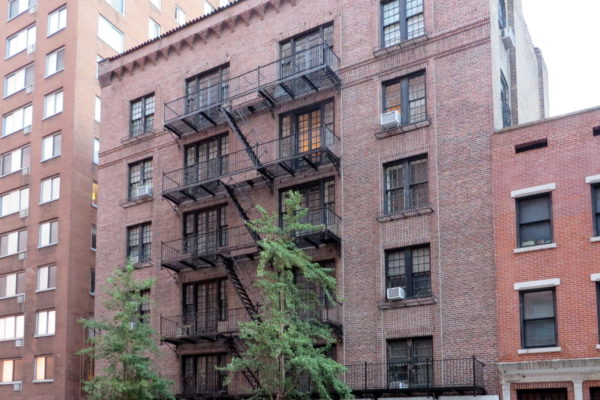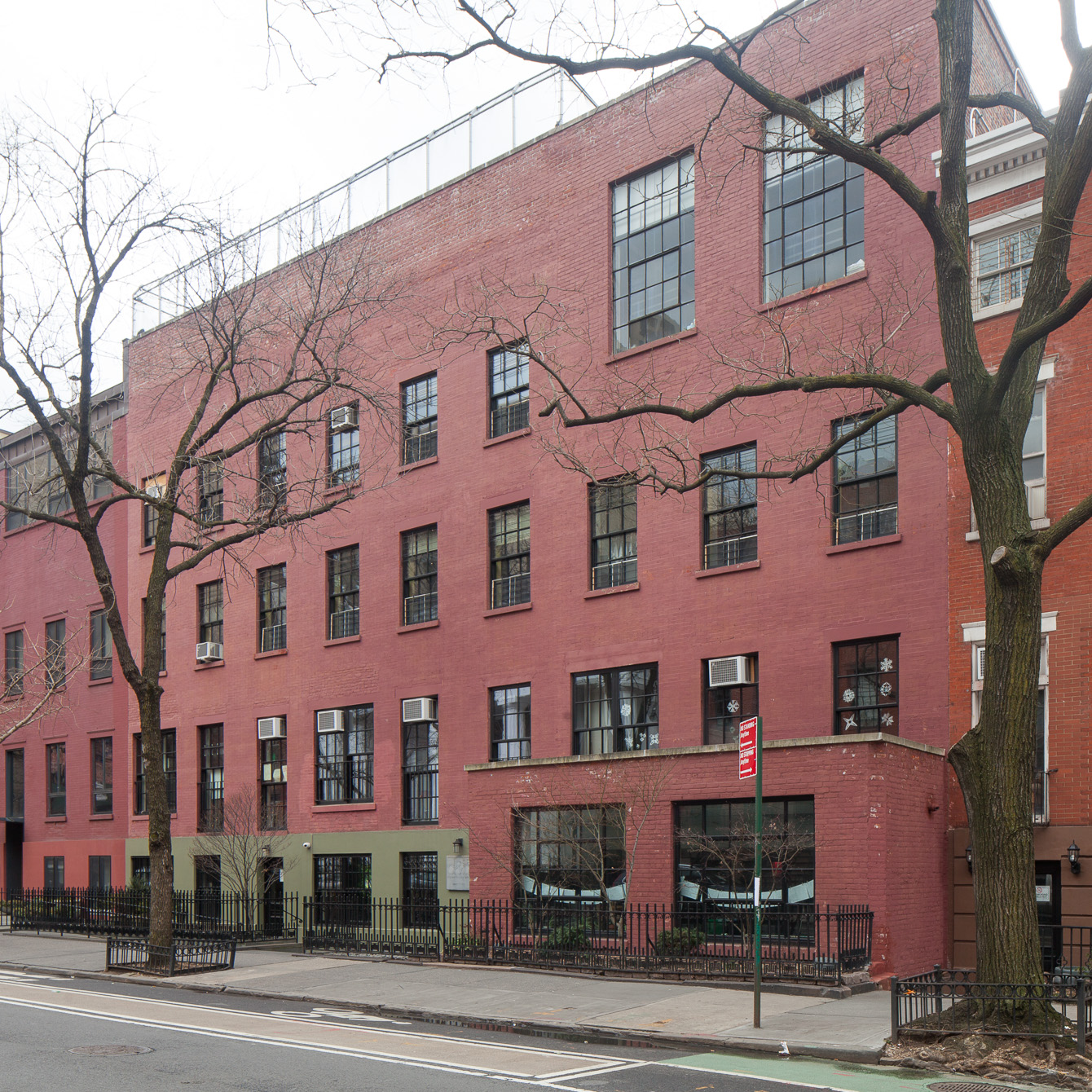
City and Country School
overview
Caroline Pratt was one of many women in same-sex relationships who made important contributions to the Progressive Era reform movement — in her case, to the field of education — in the early 20th century.
In 1921, she moved her experimental school to 165 West 12th Street and renamed it City and Country School; it has since expanded to include several adjoining buildings on West 12th and 13th Streets, with a main entrance at 146 West 13th Street.
On the Map
VIEW The Full MapHistory
The City and Country School was founded by progressive reformer Caroline Pratt on the belief that children learned from doing and that their innate curiosity and desire to learn, evident in their individual and group play, should be harnessed. Her concept for the school first took place over a two-month period in 1913 at Hartley House Settlement (now Hartley House) at 413 West 46th Street, where she led a kindergarten class in her experimental Play School. This was funded by Edna Smith, Pratt’s friend from the Women’s Trade Union League.
In the fall of 1914, between her own resources and additional funding from Smith, Pratt opened her school in a three-room apartment in Greenwich Village at the corner of West 4th and 12th Streets. Both women taught students there and shared the apartment with Pratt’s partner Helen Marot (Pratt and Marot later lived at 252 West 12th Street). In 1916, on the invitation of Lucy Sprague Mitchell, another progressive reformer in the field of education, the school moved to a former stable on MacDougal Alley, behind Mitchell’s house at 15 Washington Square. Mitchell also served as a teacher there and provided financial assistance. That same year, she co-founded the Bureau of Educational Experiments (BEE) to document the development and learning processes of children; Pratt and Marot were members of this group, which provided support for the Play School’s expansion.
In 1921, the Play School was renamed the City and Country School, partly to broaden its programming beyond Greenwich Village (the “Country” reference derived from a camp in the Hudson River Valley that Pratt and her colleagues briefly ran for older children during this period). That same year, the school moved to a rowhouse at 165 West 12th Street, which Mitchell had purchased and later sold to the school. (Elisabeth Irwin, who had been working in the field of education reform for about a decade, opened her Little Red School House, also in Greenwich Village, in 1921.) At the center of Pratt’s theory was creative play, especially with wood “unit blocks” that she had manufactured in rectangles, squares, cylinders and other shapes, still in use today. With these blocks and other simple items, play could become a creative, educational activity. Pratt innovated in the incorporation of field trips as a way to teach students about the world and stimulate their imagination. Rather than rote memorization, Pratt investigated learning by doing. For example, she had students learn math by running a school supplies shop or a post office. The school’s rooftop was used for recreational activity.
It seemed to me that a school’s greatest value must be to turn out human beings who can think effectively and work constructively, who could in time make a better world.
In 1940, Mitchell financed the remodeling of the City and Country School buildings, which were also raised in height to provide more space. Over time, the adjoining houses at 161-163 West 12th Street and 144-150 West 13th Street, with an outdoor play yard in the middle of the block, became part of the school. Pratt served as principal until her retirement in 1945, continuing on as principal emerita until her death in 1954. Today, City and Country School, with a main entrance at 146 West 13th Street, continues to educate children ages two through thirteen and bills itself as “one of the original and most celebrated progressive schools in the country.”
Entry by Amanda Davis, project manager (December 2021).
NOTE: Names above in bold indicate LGBT people.
Building Information
- Architect or Builder: unknown (161-165 West 12th Street; 144-150 West 13th Street); John C.B. Moore (1940 remodel of 144-148 West 13th Street)
- Year Built: 1841 (161-165 West 12th Street, with 161-163 remodeled c. 1940); 1842 (144-148 West 13th Street, remodeled in 1940); 1846 (150 West 13th Street)
Sources
Annalise Orleck, Common Sense and a Little Fire: Women and Working-Class Politics in the United States, 1900-1965 (Chapel Hill: University of North Carolina Press, 1995).
Caroline Pratt, I Learn from Children: An Adventure in Progressive Education (New York: Simon & Schuster, 1948).
“Caroline Pratt Dies; Headed ‘Play School,’” New York Herald Tribune, June 7, 1954, 20.
“Caroline Pratt, Educator, Dead,” The New York Times, June 7, 1954, 23.
Lilliam Faderman, To Believe in Women: What Lesbians Have Done for America – A History (Boston: Houghton Mifflin Co., 1999).
Mary E. Hauser, Learning from Children: The Life and Legacy of Caroline Pratt (New York: Peter Lang, 2006). [source of pull quote]
Robert H. Beck, “Progressive Education and American Progressivism: Caroline Pratt,” Teachers College Record 60 (1958): 129-137.
Do you have more information about this site?
This project is enriched by your participation! Do you have your own images of this site? Or a story to share? Would you like to suggest a different historic site?
